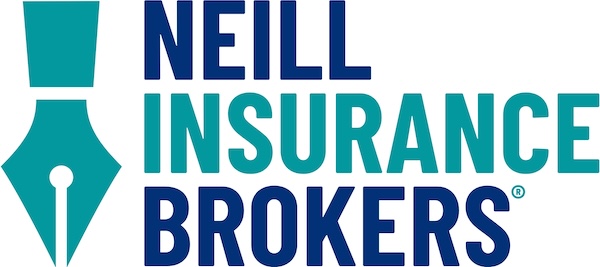
Is Your Teen Driver Sending Your Insurance Rates Skyrocketing?
If you live in Texas, adding a teen driver to your auto insurance policy can increase your premium by $2,400 to $3,200 a year. For many Roanoke families, the proud moment of handing over the car keys quickly turns into financial sticker shock.
The good news is that it doesn’t have to be that way. With the right strategies, Texas families can cut teen driver costs by 25–40% without sacrificing coverage. At Neill Insurance, we’ve helped hundreds of local parents lower their premiums while keeping their kids fully protected.
In this guide, you’ll learn the top three ways to maximize savings when adding a teen driver in Texas, strategies designed around our state’s unique insurance rules and local market opportunities.
1. Master the Texas Discount Arsenal: Academic and Driver Training Savings
The fastest way to lower teen driver costs is by stacking Texas’s education and training discounts.
Academic Achievement Discounts
Most insurers offer a Good Student Discount worth up to 25% if your teen maintains at least a B average (3.0 GPA) or ranks in the top 20% of their class. In many cases, this discount lasts until age 25 as long as they remain a full-time student.
Additional opportunities include:
- Honor Roll Recognition: Up to 5% more off premiums
- High SAT/ACT scores: Accepted by some carriers for extra savings
- Homeschool programs: Discounts available with standardized test score documentation
Driver Training Discounts
Completing certified defensive driving or advanced driver training programs can reduce premiums by another 8–15%. Parent-taught driver ed in Texas also qualifies when submitted with the right documentation. A Roanoke High School senior saved $480 annually by combining a good student discount (18%) with defensive driving (8%), cutting a $2,800 premium down to $2,070.
Education and training are the discount double-play every Texas family should claim.
2. Strategic Timing and Payment Optimization: The Hidden Savings Most Texas Families Miss
The timing of when and how you add your teen driver can be just as important as the coverage itself. Families who approach this strategically can potentially save $600–$1,200 annually. The most common mistake is adding a teen driver the day they earn their license. While it feels natural, this often leads to higher costs because insurance companies calculate rates based on policy anniversary dates and renewal cycles. Adding a driver mid-term can trigger immediate rate increases that are rarely priced as competitively as those timed with annual renewals.
A smarter approach is to plan enrollment around your policy’s renewal window. By adding your teen 30 to 45 days before your policy renews, their rates are integrated into the upcoming annual pricing rather than tacked on mid-term. Coordinating with your policy anniversary date prevents short-term rate spikes that compound over time and ensures your family receives the benefit of a full market review when rates are recalculated.
Texas families also enjoy timing advantages that parents in other states don’t. Coordinating your teen’s addition with home insurance renewals creates powerful bundling benefits, often producing the largest household discounts available. Texas’s highly competitive insurance market also rewards families who shop strategically during peak renewal seasons, when carriers are especially motivated to win new business. In some cases, families can even align these timing strategies with tax planning to uncover additional financial advantages, particularly for those with business-related driving expenses.
When approached with foresight, the timing of adding your teen driver is not just an administrative step, it’s a critical decision point that can save hundreds each year while positioning your family for long-term insurance efficiency.
3. Strategic Policy and Vehicle Optimization: Smart Choices That Save Thousands
When it comes to policy structure, it’s almost always more affordable to add your teen to your existing auto insurance policy rather than purchasing a separate one. Doing so allows them to benefit from your established driving record and any multi-policy discounts you’ve already earned. Families in Texas can also take advantage of Graduated Driver License (GDL) benefits by documenting each step of their teen’s progression through restricted driving periods, ensuring eligibility for valuable premium reductions.
Just as important as policy structure is the choice of vehicle. Assigning your teen to the lowest-value, safest vehicle in your household can make a dramatic difference in premium costs. Sports cars, luxury models, and large SUVs tend to carry much higher rates, while modest sedans with strong safety features are far more cost-effective. Parents should prioritize vehicles with excellent IIHS and NHTSA safety ratings and evaluate insurance-to-value ratios carefully to avoid paying more than necessary for coverage.
Coverage optimization provides another layer of savings and protection. Raising deductibles on the vehicle your teen drives can reduce premiums by 15–25%, while adding an umbrella policy often delivers broader liability protection at a lower overall cost than dramatically increasing auto coverage limits. And because Texas has one of the highest rates of uninsured drivers in the country, maintaining strong uninsured motorist coverage is critical to protecting your family’s financial well-being.
Don’t Let Teen Driver Insurance Double Your Premium
For Texas families, adding a teen driver doesn’t have to mean financial strain. With the right strategy, you can cut costs each year, while giving your teenager the coverage they need. At Neill Insurance, we combine local expertise with multi-carrier access to get you the best protection at the most competitive price.
We’ve built a system to uncover every available discount and structure policies the smart way. We’ve helped families across Roanoke and North Texas protect their teens affordably, and we can do the same for you.
Call us today at (682) 237-7975 or click below to schedule your teen driver insurance review.


